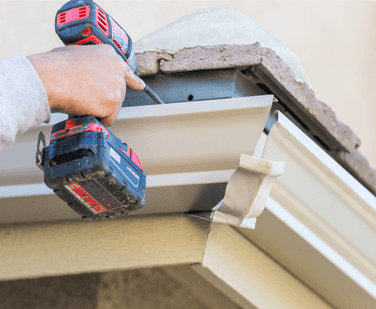Pros and Cons of a Heated Roof
Professional Roofers in Baltimore
Heat cables are often called heat tapes, de-icing cables, heat coils and roof heating cables. Although heat cables are commonly used to deal with ice dams and other winter conditions on a roof, they can also be used to deal with other types of roof problems. Before you decide to use heat cables, it is important to determine their capabilities and whether they are worth the effort and money. Reputable roofers in Baltimore like our team here at Phil DiBello Family Roofing can help you make an informed decision.
Heat Cables Explained
Heat cables are commonly used to deal with ice dams, snow and other major winter conditions on a roof. They work by heating the surrounding area and melting away the ice and snow. These cables then form channels and grooves that allow the melted snow and ice to drain into the gutter system of the roof. To get these installed, you should contact our professional roofers in Baltimore. Our team is ready to get your heat cables installed properly and efficiently.
Pros and Cons of Installing Heat Cables
1. Pro – Properly Installed
Although heat cables can work well, they can’t completely remove all of the ice and snow from your roof. Instead, they create channels and grooves that allow the water and snow to flow into the gutter system. These cables can also clear out any areas of ice and snow that are in the immediate vicinity. Even if ice dams form on your roof, heat cables can still prevent them from blocking the flow of melted snow and ice into the gutter system.
2. Con – Increase in Utility Costs
The cost of having heat cables installed can be costly since they require electricity to operate. Some heat cables can regulate themselves and produce heat depending on the weather conditions. These systems can help lower your utility bills, though they usually require a lot of money to install.
3. Pro – Save Money
Even with the increase in electric bills, heat cables can still help lower the monthly bills of homeowners by allowing them to remove ice dams from their roofs. They can also help prevent the interior of a home from getting damaged due to the ice buildup.
4. Con – Not Always Effective
Although de-icing or heat cables can be installed on your roof, they are only as effective as the original ones when it comes to removing ice dams. If you are not able to do it yourself, it’s best to hire a contractor like us with a good reputation and a lot of experience in the field.
Before harsh weather conditions start to affect your area, it’s a good idea to have de-icing cables installed on your roof. Having them installed by our professional team will allow you to get the job done quickly and efficiently.
5. Pro – Functions in Certain Temperatures
Although heat cables can function well in certain weather conditions, they can only remove ice dams when temperatures are at their highest. This is because the ice is still intact and can form when the temperature is at its freezing point. When the temperature rises and the ice begins to melt, heat cables will work better. They can also remove the accumulated ice from the roof much faster.
Other Options Over Ice Dams
1. Roof Snow Rake
An aluminum roof snow rake is a lightweight and effective way to remove snow from the roof before it forms ice dams. It can be used to remove as much snow as possible without damaging the roof’s other materials. It features plastic sheeting and a set of wheels that help it catch as much snow as possible.
2. Ice Melt Stockings
These are known as ice melt socks or ice melt stockings, and anyone can make these. To make them, you will need various supplies such as nylon stockings, ice melt and a pair of scissors. Simply cut the foot area off the socks and fill them with ice melt.
The process of attaching the ice melt socks to the roof is fairly simple. They can be placed vertically and are designed to channel the melting water away from the edge of the roof. This channel will allow the water to run off the roof instead of blocking the edges.
3. Zigzag Roof De-Icing
A heating cable that’s designed to melt ice is commonly used but can also be made by a licensed electrician or expert roofers in Baltimore. This type of cable will have to be placed on the lower portion of the roof.
Before the cable is placed on the roof, make sure that the area is clear of snow. Also, make sure that the power and plug-in outlets are away from the water. If the cable is placed without anyone’s help, make sure that the wires are secured properly.
Before the cables are placed on the roof, ensure that the screws are placed under the overlapping shingles. This ensures that the cables won’t get damaged and cause subsequent leaks.
Contact Us Today
Although heat cables have various advantages, they can also cause ice dams to form. If you have a roof that gets affected by winter weather conditions, such as ice dams, it’s important to investigate all of your options. Having the proper knowledge and experience in installing and maintaining heat cables can help prevent ice dams from forming. Call our professional roofers in Baltimore at Phil DiBello Family Roofing to go over your roof heating options! We are happy to help!



